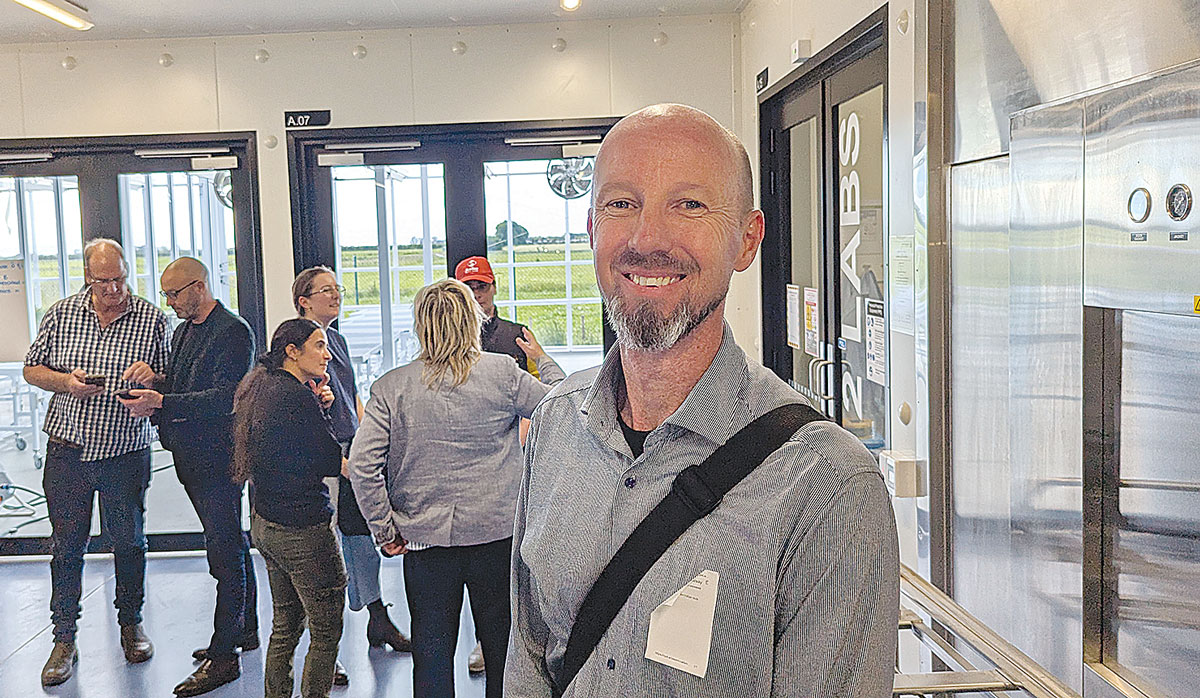NZ scientists make breakthrough in Facial Eczema research
A significant breakthrough in understanding facial eczema (FE) in livestock brings New Zealand closer to reducing the disease’s devastating impact on farmers, animals, and rural communities.
The Canterbury Growers Society will soon be seeking sponsorship for a new regional young grower competition, after an absence of several years.
While other regions – Pukekohe, Central Otago, Hawke’s Bay, Nelson, Gisborne and Bay of Plenty – have run regular competitions with winners competing for a national title, Canterbury has not.
Restarting the regional competition is part of a plan to reinvigorate the group by the new chairman, Rob Lindsay.
The group, with about 250 on its base emailing list out of an estimated 500 fruit and vegetable growers across the province, is seeking ways to re-engage with growers and ensure they know where they can turn to for support and information.
Lindsay says Canterbury Growers has been a functioning society for nearly 100 years, existing to support growers and ensure that people who need help in an emergency, receive it. But restarting the competition is the group’s “succession plan”.
“It brings growers together. It brings young people along,” says Lindsay.
“Young people are the future of this industry, so if we can help them, teach them, mentor them, support them, that’s a good thing.”
Lindsay says they are now talking to various stakeholders to decide when to run it, to best fit in with various members’ growing calendars, but it would probably be in May or June.
“In Canterbury, we have a large area under potatoes in Mid and South Canterbury. We represent 20% of the nation’s onion production and we have a lot of market gardens in North Middle and South Canterbury.
“And there’s some fruit starting to be grown again, too. We’ve got some modern format orchards being put in.”
Lindsay is based at Clarkville, just north of Christchurch, where he grows telegraph cucumbers hydroponically, with about 1.6ha under cover. He has been the group chair for about two months.
 |
|---|
|
Canterbury Growers Society chair Rob Lindsay. |
New AgResearch Glasshouse
One of Rob Lindsay’s first acts as chair of the Canterbury Growers group was to host a meeting of the executive in conjunction with a visit by members to AgResearch’s new glasshouse facility at Lincoln.
The facility is unique in New Zealand, being the only one where scientists can conduct secure, contained research on microorganisms, insects and plants all under one roof.
It is expected to modernise agricultural research by providing a contained, efficient environment for multi-trophic studies—research that examines the complex interactions among multiple organisms within an ecosystem.
The $11 million, 402 square metre facility is certified to PC2 (Physical Containment 2) standards, with spaces kept at low atmospheric pressure so air only goes in through any opening and only goes out through high-quality filtration.
AgResearch says that ensures that every aspect of an experiment, from fumigation protocols to pollen sterilisation, is meticulously controlled, reducing risks, speeding up research, and reducing costs.
“No other research facility in New Zealand combines these capabilities in a single, purpose-built environment,” says research associate and glasshouse manager, Sarah Jackman. “That’s what makes it so exciting.”
The facility can simulate complex scenarios involving multiple organisms. For example, scientists can study gene-edited ryegrass interacting with an exotic insect. Unlike overseas studies, which may not address New Zealand’s unique flora and fauna, it allows for research specifically tailored to New Zealand’s agricultural ecosystem.
Other advanced features include an infrared-capable lighting system, which simulates a full spectrum of sunlight, and a specialised water filtration system.
Jackman expects research to begin on Fall Army worm, Green Vegetable Beetle, Porina, and the Coconut Rhinoceros Beetle, which is a major pest in the Pacific.
AgResearch is inviting expressions of interest from potential clients interested in research partnerships.
Horticulture New Zealand (HortNZ) says a new report projects strong export growth for New Zealand's horticulture sector highlights the industry's increasing contribution to the national economy.
Fonterra shareholders say they will be keeping an eye on their co-operative's performance after the sale of its consumer businesses.
T&G Global says its 2025 New Zealand apple season has delivered higher returns for growers, reflecting strong global consumer demand and pricing across its Envy and Jazz apple brands.
New Zealand's primary sector is set to reach a record $62 billion in food and fibre exports next year.
A new levying body, currently with the working title of NZWool, has been proposed to secure the future of New Zealand's strong wool sector.
The most talked about, economically transformational pieces of legislation in a generation have finally begun their journey into the statute books.

OPINION: Federated Farmers has launched a new campaign, swapping ‘The Twelve Days of Christmas’ for ‘The Twelve Pests of Christmas’ to…
OPINION: It used to be that the National Fieldays attracted brickbats for being officious clipboard carriers, while the regional, farmer-run field…